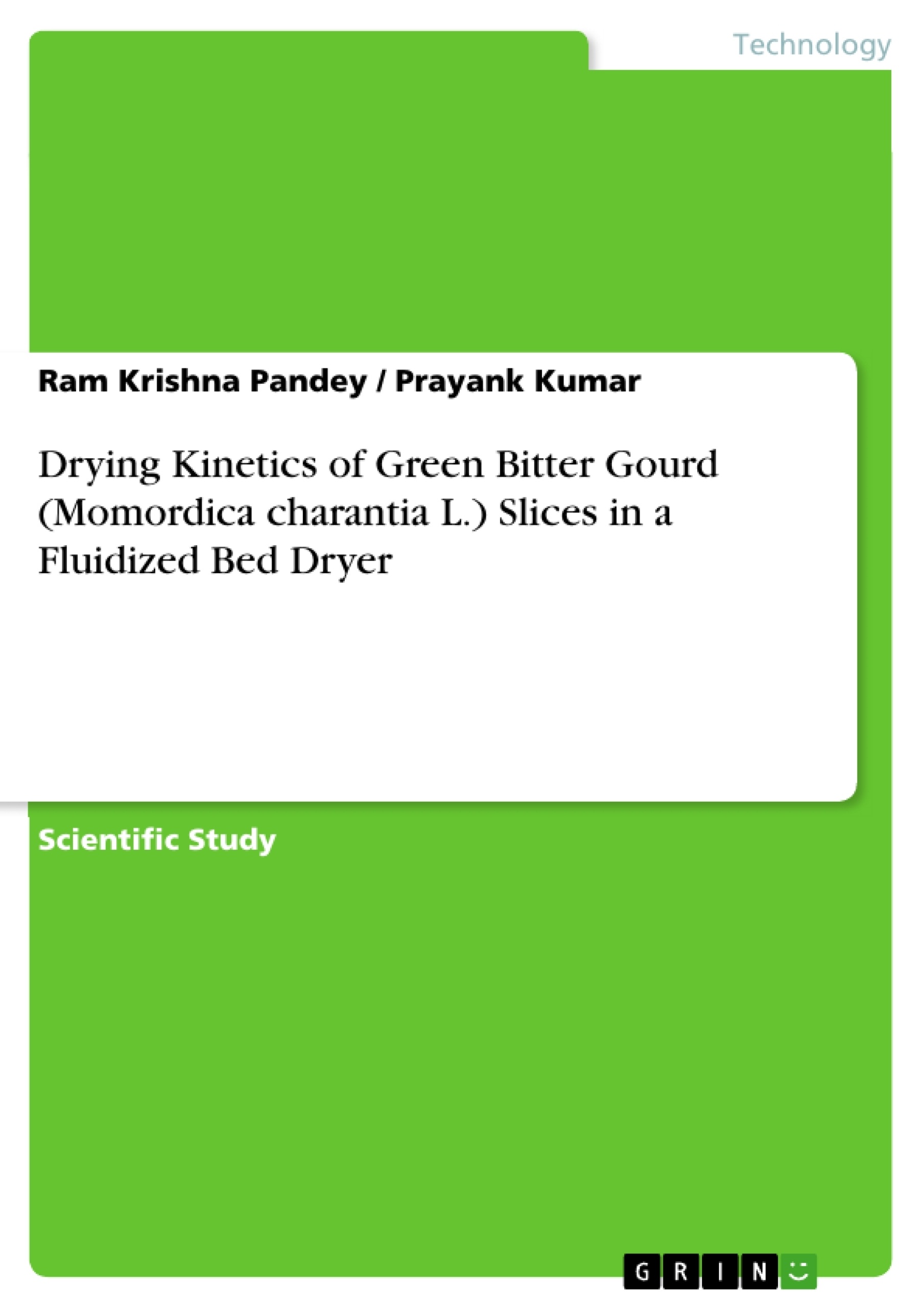Green Bitter gourds (Momordica charantia L.) belong to ‘cucurbitacceae’ family and are commonly called as bitter gourd, papailla, karalla, balsam apple and balsam pear etc. in different part of the world Bitter gourd contains an array of biologically active plant chemicals including triterpenes, protein and steroids. Bitter gourd have extremely low amount of calories but have a lot of valuable nutrients. In India, bitter gourd stored in the dried form. The indigenous practice is to dry the sliced vegetable in sun during October-November and used up to the month of May. However, the quality of the dried product is rather poor.
Experiment were conducted in TNAU fluidized bed dryer to study the drying characteristic of green bitter gourd slices at five level of temperature (50,55,60,65,700C), five level of sample (100,125,150,175,200 g) and three level of air velocity (1.5,2,2.5 m/sec). Bitter gourd slice was dried in hot air dryer. Moisture loss data were recorded periodically at an interval of five minutes for the first forty minutes and consequently fifteen minutes intervals. Quality characteristics of bitter gourd slice were determined in terms of rehydration ratio, color, ash content. The data were analyzed to study drying characteristics of a bitter gourd.
The effect of various factors was analyzed using analysis of variance (ANOVA) technique. Second order model was fitted in the responses and independent variables using regression analysis. The drying behaviour of Bitter gourd was mathematically analyzed using Page’s, Logarithmic and Exponential models. The goodness of fit of the model was tested using coefficient of determination (R2),and standard error of estimate (SEE).
The effect of drying temperature, air velocity, sample weight and their interactions were significant on drying time at 5% level of significance. Logarithmic model was found to describe the drying behaviour of Bitter gourd better as compared to Page’s and Exponential model. The optimum level of independent variable for drying of green gourd obtained by using numerical optimization of multiple responses viz, drying time, dehydration ratio, ash content, and color were temperature of 550C ,velocity 2.5m/sec sample size of 100g. These optimum values are recommended for drying of Bitter gourd.
Table of Contents
- INTRODUCTION.
- REVIEW OF PAST RESEARCH.
- EXPERIMENTAL PROCEDURE.
- RESULTS OF RESEARCH
- Moisture ratio
- SUMMARY AND CONCLUSIONS.
- BIBLIOGRAPHY.
- APPENDIX.
- ABSTRACT.
Objectives and Key Themes
This research investigates the drying kinetics of green bitter gourd slices using a fluidized bed dryer. The study aims to determine the optimal drying parameters for maximizing product quality and efficiency.
- Impact of drying parameters (temperature, air velocity, sample weight) on drying kinetics.
- Evaluation of drying models (Page's, Exponential, Logarithmic) for describing the drying process.
- Analysis of quality characteristics of dried bitter gourd slices.
- Optimization of drying parameters for achieving desired product quality.
- Review of past research on bitter gourd, its nutritional value, processing, and drying techniques.
Chapter Summaries
- Introduction: This chapter introduces the importance of bitter gourd as a vegetable in human diets, highlighting its nutritional value and medicinal properties. It discusses the significance of drying as a post-harvest processing technique for preserving vegetables and extending their shelf life. The chapter also outlines the objectives of the research and the specific drying parameters that will be investigated.
- Review of Past Research: This chapter delves into the existing literature on bitter gourd, including its nutritional and therapeutic value, processing methods, and various studies on drying techniques. It explores the scientific understanding of drying processes and the factors influencing drying kinetics.
- Experimental Procedure: This chapter details the experimental setup and procedures used in the research. It describes the fluidized bed dryer, the preparation of bitter gourd slices, and the specific drying conditions applied during the experiment.
- Results of Research: This chapter presents the experimental results obtained from the drying process. It analyzes the effect of different drying parameters on the drying kinetics, including moisture ratio, drying time, and product quality.
Keywords
Bitter gourd, drying kinetics, fluidized bed dryer, drying parameters, moisture ratio, drying models, quality characteristics, nutritional value, medicinal properties, post-harvest processing, Momordica charantia L., cucurbitacins.
- Quote paper
- Ram Krishna Pandey (Author), Prayank Kumar (Author), 2015, Drying Kinetics of Green Bitter Gourd (Momordica charantia L.) Slices in a Fluidized Bed Dryer, Munich, GRIN Verlag, https://www.grin.com/document/300619



